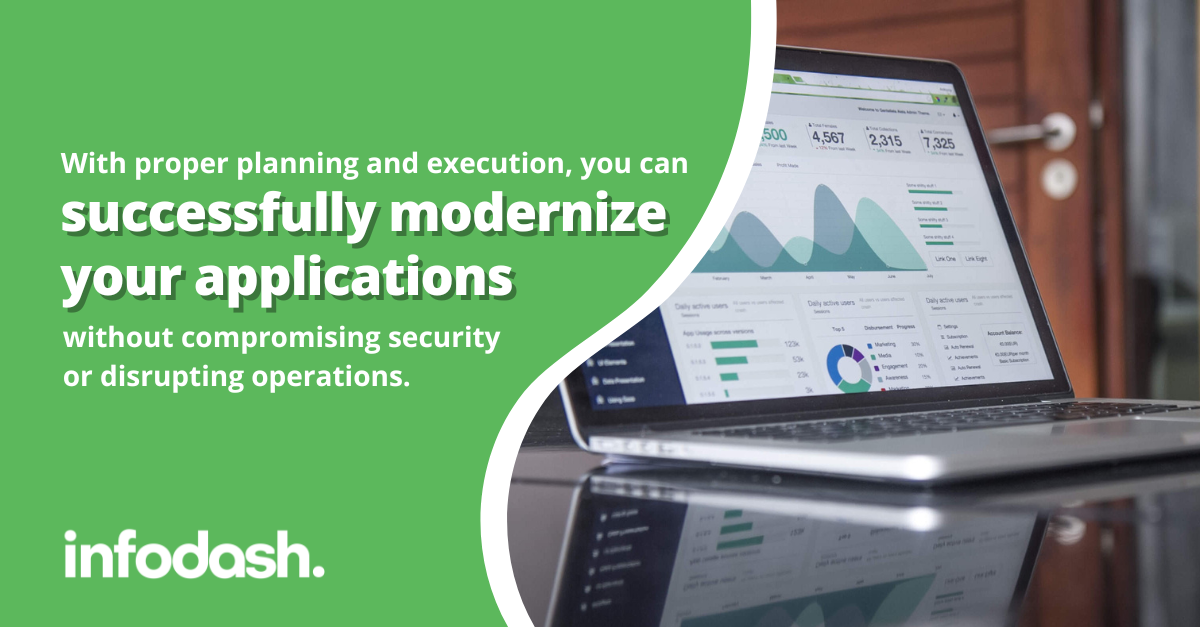The Beginner’s Guide to Application Modernization

As technology evolves, firms need to keep up with changes in order to stay competitive and efficient. However, many law firms have struggled with implementing application modernization initiatives because of challenges like budgets and staff shortages. But with proper planning and execution, you can successfully modernize your applications without compromising security or disrupting operations.
Application modernization is a process through which an existing application or system is updated to improve its performance and functionality. It can handle more tasks on its own, rather than relying on manual processes or human intervention.
The legal industry is heavily regulated, and compliance with these regulations is a constant challenge for firms. As a result, many law firms are reluctant to adopt new technologies that could potentially expose them to more liability or cause them to fall out of compliance with existing laws. Another challenge for application modernization in the legal industry is that many organizations still rely on legacy systems that were developed decades ago and have become difficult or impossible to update due to technical limitations or lack of expertise within their IT departments.
Here is a beginner’s guide on how to overcome these challenges and properly implement an application modernization initiative:
- Assess the Current Application: It is essential to conduct a comprehensive assessment of the existing application. This will help identify areas that need improvement, such as outdated technology, security vulnerabilities, and performance issues. The assessment should also take into account the current and future business needs.
- Define Objectives: These objectives should be clear, measurable, and aligned with the organization’s overall strategy. Examples of objectives may include improving user experience, reducing maintenance costs, enhancing security, or adding new features to the application.
- Choose the Right Technology: The technology should be scalable, secure, and compatible with the existing infrastructure. Firms need to evaluate different options and select the technology that best fits their needs, budget, and long-term goals. Choose a technology partner who is knowledgeable about the legal industry, adaptable and able to meet your needs, and cost-effective.
- Plan the Migration: Migrating from a legacy application to a modernized one requires careful planning. The migration plan should include timelines, milestones, and contingency plans. It should also address potential risks such as data loss, downtime, and user disruption.
- Measure Progress: Set milestones and goals for each phase of your modernization project. Use dashboards to track how much time has been spent on each stage of application modernization. Firms need to focus on creating intuitive, user-friendly interfaces that provide a seamless experience for clients and employees.
Application modernization has several advantages, and the legal industry is ripe for this transformation. However, it is important to keep in mind that this process is not easy or quick.
One additional crucial point to remember is that investing in an intranet or extranet is necessary if you want to modernize applications with the greatest likelihood of success. This is the best way for your team to collaborate and share knowledge. For one thing, it will help you get your application modernization project off on the right foot by allowing everyone involved access to all relevant information– including instructions on how best to proceed with their work and where they can find more information. This allows everyone involved in the process to contribute their ideas and suggestions, which ultimately leads to better results. In addition, if there are any issues with an individual’s progress on a task within their departmental role within an organization then these can be easily tracked through such platforms, which can then prompt managers into action where necessary.
If you are interested in learning more about Infodash and how it will work for your organization, request a demo today!
Subscribe for Updates


